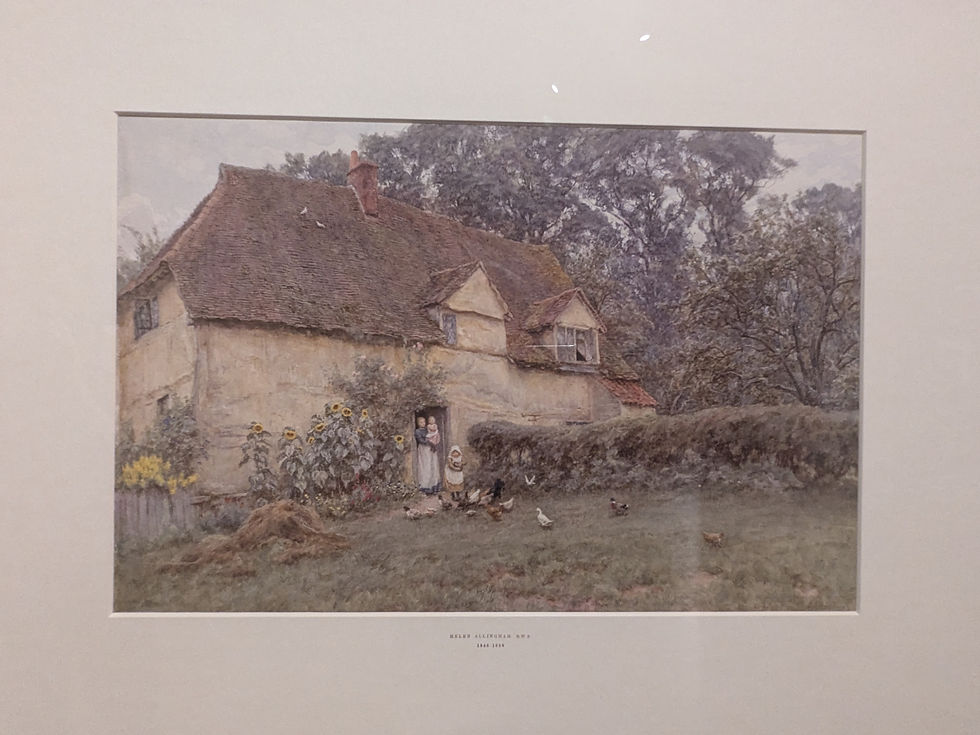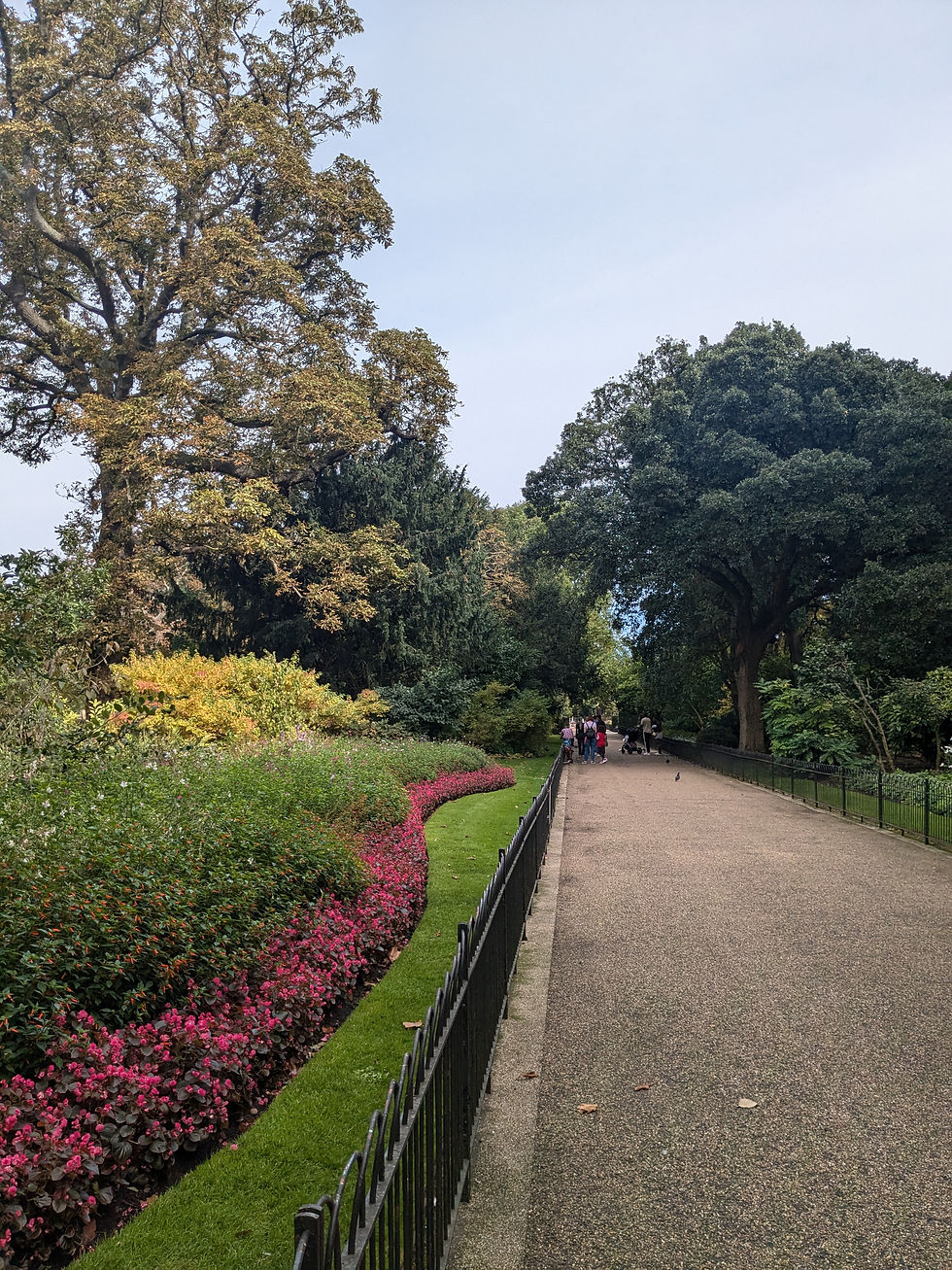Now You See Us
- chirp54
- Sep 19, 2024
- 3 min read
Every now and then an exhibition comes along that hits you so viscerally that it's almost overwhelming. Such was the case with "Now You See Us - Women artists in Britain 1520 to 1920." To quote the Tate Britain,
"The exhibition follows women who practiced art as a livelihood rather than an accomplishment. The chosen works were often exhibited at public exhibitions, where these artists sold their art and made their reputations. Most of the women featured belonged to a social class that gave them the time and opportunity to develop their talents. Many were the daughters, sisters or wives of artists. Yet even these women were regarded differently. Now You See Us charts their fight to be accepted as professional artists on equal terms with men.
Many of the exhibited works reflect prejudiced notions of the most appropriate artforms and subjects for women. Others challenge the commonly held belief that women were best suited to "imitation". proving they have always been capable of creative invention. From painting epic battle scenes to campaigning for access to art academies, these women defied society's limited expectations of them and forged their own paths. Yet so many of their careers have been forgotten and artworks lost."
As I made my way through the exhibition, I marveled at the incredible artworks on display and found myself getting angrier and more frustrated on their behalf. Here are some of the memorable pieces that elicited that reaction.
Angelica Kauffman "Invention" 1778-1780:
The piece above was, by the way, massive; about 5 feet across. The next was a miniature.
Levina Teerlinc "Elizabeth I" c 1560-1565:
Artemisia Gentileschi "Self-portrait as the Allegory of Painting (La Pittura)" c 1638-1639:
Mary Beale "Jane Fox, Lady Leigh as a Shepherdess" c 1675
Angelica Kauffman "Colour" 1778-1780:
Maria Spilsbury "Ascent of the Innocents" exhibited 1800:
Anne Seymour Damer "Two Sleeping Dogs" 1782:
Mary Grace "Self-portrait" 1760s:
Margaret Sarah Carpenter "Portrait of Harriet, Countess Howe: exhibited 1834:
Harriet Gouldsmith "In Hyde Park"
The general consensus of male artists, galleries and art associations was that women artists should stick to painting flowers. Though that sentiment makes the blood boil, when they painted flowers, they did it masterfully.
Annie Feray Mutrie "Flower Study with a Butterfily" 1869
Harriet Hosmer "Puck on a Toadstool" 1850s:
Lucy Kemp-Welch "Colt Hunting in the New Forest" 1897:
Kemp-Welch had a thriving career as an artist and was also the first woman principal of a mixed gender art school, the Bushey School of Painting.
Mary Thornycroft "Princess Helena as Peace" 1856:
Emily Osborn "Nameless and Friendless" 1857:
Osborn exhibited widely and was supported by wealthy patrons. She was also part of the "rights of women" debate, campaigning for more public roles for women. "Nameless and Friendless," exhibited at the Royal Academy in 1857, dramatizes the difficulties faced by women artists. Osborn shows a young woman offering a painting to a skeptical dealer. With no reputation (Nameless) and no connections (Friendless) she has little chance of a sale. Behind her, two leering men emphasize the impression of her isolation and vulnerability.
Elizabeth Butler "Calling the Role After an Engagement, Crimea" 1874:
Butler specialized in battle paintings, challenging society's expectations of women artists.
Henrietta Rae "Psyche Before the Throne of Venus" 1894:
Barbara Leigh Smith Bocichon "Chateau Gaillard on the Seine" (watercolour) 1870:
Watercolor was considered one of the "polite arts" best suited to women. The principal watercolor societies, however, restricted the membership of women.
Helen Allingham "Feeding the Fowls, Pinner" 1889-90:
Gwen John "Chloe Boughton-Leigh" 1904-08:
Ethel Walker "Decoration: the Excursion of Nausicaa" 1920:
Anna Airy "Shop for Machining 15-inch Shells: Singer Manufacturing Company, Clydebank, Glasgow, Scotland" 1918:
Laura Knight "At the Edge of the Cliff" c 1917:
It was an extraordinary exhibition which left me exhilarated, angry, and very proud of my sex. Entering the tube on the way back to the flat I saw this sign. Well said.
After leaving the tube at Kensington High Street, I walked back to the flat through Hyde Park.
I could scarcely believe my eyes when I saw two parrots on the fence. Are you supposed to be in London?
Exiting Hyde Park at the Albert Memorial
I passed the Royal Albert Hall.
It was Sunday, and the tradition in Britain is that on Sunday, you have Sunday Roast in the afternoon. Since I avoid meat it's hard to find a place to grab a bite. Happily, Mowgli is open on Sunday, so we headed across town to enjoy our favorite Indian Street Food. On the way back we passed the Now Building which always has incredible video displays in its courtyard. If you aren't afraid of connecting, here's a link to one of the videos.
































Comments